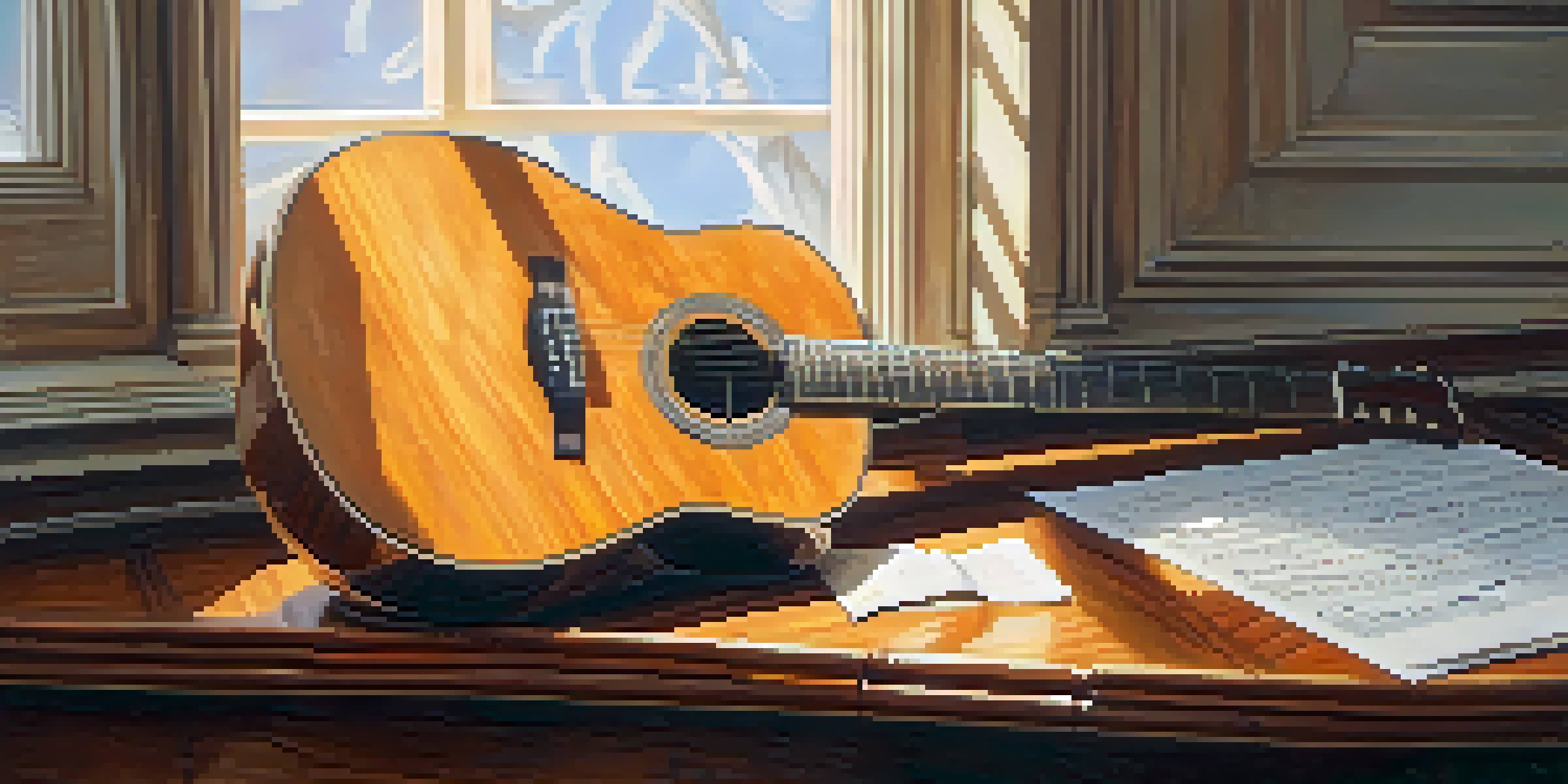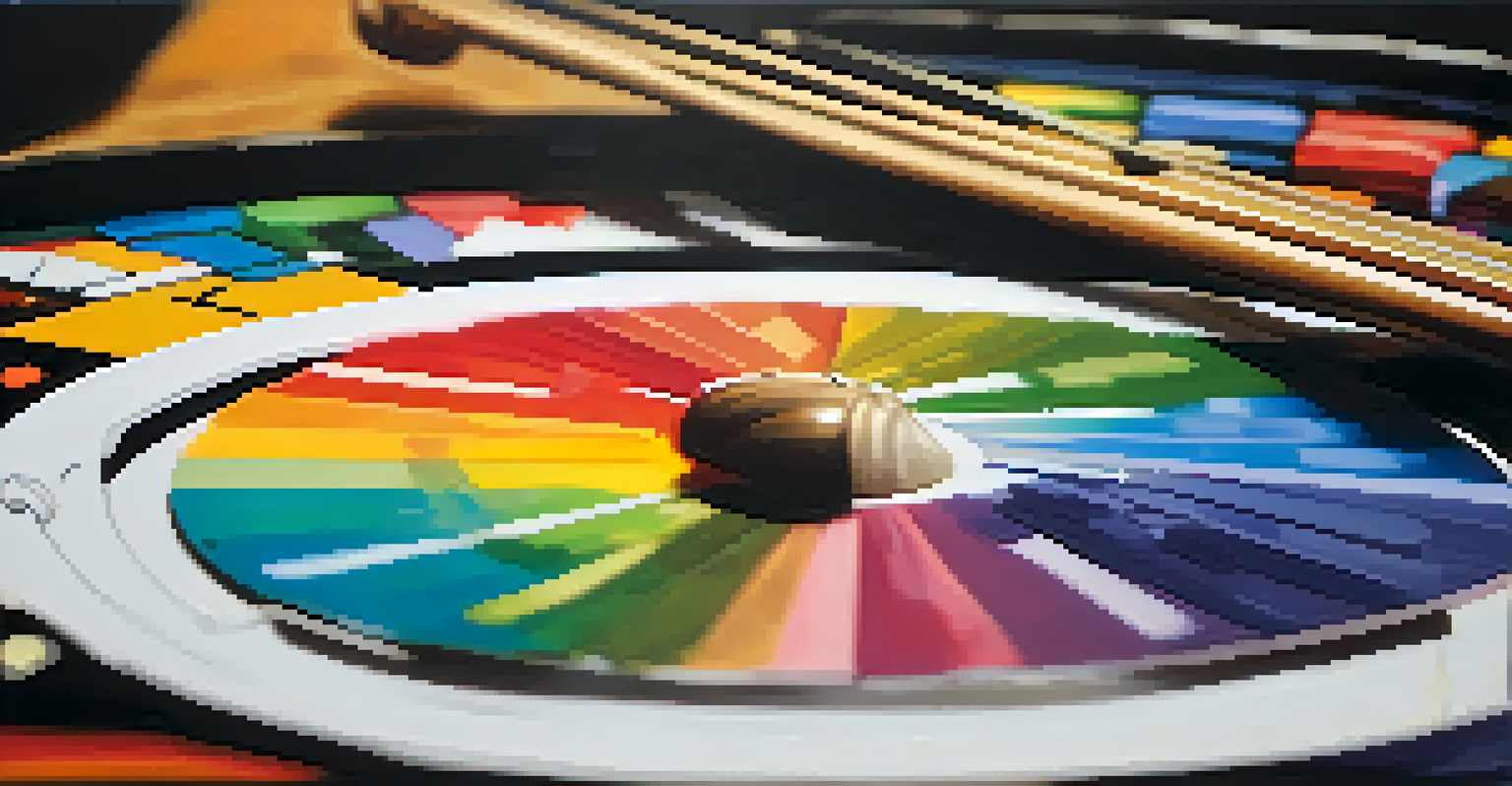Pentatonic Scale: A Guitarist's Best Friend for Improvisation

Understanding the Pentatonic Scale and Its Structure
The pentatonic scale is a five-note scale that is simple yet powerful. Unlike the more complex scales, the pentatonic scale offers a straightforward structure, making it easier for guitarists to grasp. It consists of two types: the major pentatonic and the minor pentatonic, which serve different emotional palettes in music. For example, the major pentatonic tends to produce a happy, uplifting sound, while the minor pentatonic resonates with a more soulful, melancholic vibe.
The pentatonic scale is the simplest scale of all, and the most effective for improvisation.
What makes the pentatonic scale a favorite among guitarists is its versatility. You can use it across various genres, from rock and blues to jazz and country, making it a universal tool for improvisation. Imagine it as a painter's palette; with just a few colors, you can create a multitude of artworks. Similarly, with the pentatonic scale, you can craft countless melodic lines that sound great and feel natural.
Additionally, the pentatonic scale minimizes the risk of hitting 'wrong' notes, which can be intimidating for beginners. This forgiving nature allows guitarists to experiment with confidence and creativity. As a result, players can focus on expressing their musical thoughts without the fear of making mistakes, ultimately enhancing their improvisational skill.
Why Guitarists Love the Pentatonic Scale
One reason guitarists are drawn to the pentatonic scale is its simplicity. With just five notes, it eliminates the overwhelming feeling of having too many options. This makes it a go-to choice for both novices and seasoned players alike. For example, many famous solos, like those by Jimi Hendrix and Eric Clapton, heavily utilize the pentatonic scale, showcasing its effectiveness in creating memorable melodies.

Moreover, the pentatonic scale is a fantastic tool for building improvisation skills. As you practice, you begin to recognize patterns and develop a sense of musicality that helps you create more expressive solos. Think of it as learning the fundamentals of a language; once you understand the basics, you can start forming sentences and expressing more complex ideas.
Pentatonic Scale Basics
The pentatonic scale is a five-note scale that is easy to learn and versatile across various music genres.
The pentatonic scale also serves as a stepping stone to more advanced scales. Once you're comfortable with it, you can explore additional notes, such as the blue notes, to add depth and flavor to your improvisation. This gradual progression keeps you engaged and motivated, making learning an enjoyable journey rather than an overwhelming task.
Common Shapes and Patterns on the Guitar Neck
Understanding the common shapes of the pentatonic scale on the guitar neck is crucial for effective improvisation. Most guitarists learn the scale in five different positions, which correspond to various areas of the neck. Each position allows you to access different notes, enabling you to create melodies that flow seamlessly across the fretboard.
The blues is a tonic for whatever ails you.
For instance, the first position of the minor pentatonic scale starts on the 6th string at the 5th fret, while the major pentatonic begins on the same string at the 3rd fret. Visualizing these shapes helps you navigate the guitar neck with ease, similar to knowing the layout of a city; once you understand the streets, you can explore with confidence.
Additionally, practicing these shapes in different keys can enhance your versatility. By shifting the same patterns up or down the neck, you unlock new tonal possibilities. This adaptability is vital for improvisation, as you can easily follow along with different musical contexts, whether you're jamming with friends or performing live.
Incorporating the Pentatonic Scale into Your Playing
Now that you understand the pentatonic scale and its shapes, it's time to incorporate it into your playing. Start by improvising over simple chord progressions, using the pentatonic notes that fit within the chords. This practice allows you to develop your ear and gain confidence in your improvisational skills, much like a chef experimenting with flavors to create a signature dish.
One effective technique is to focus on targeting specific notes within the pentatonic scale that correspond to the chords you’re playing over. For example, if you’re playing over a D major chord, emphasize the notes D, E, F#, A, and B from the D major pentatonic scale. This targeting creates a sense of resolution and connection, making your solos more engaging.
Improvisation Made Easy
Its forgiving nature allows guitarists to experiment confidently, enhancing their improvisational skills.
Don't hesitate to mix up your phrasing, too! Experiment with different rhythms and note durations to add variety to your solos. Just like a storyteller uses different tones and pacing to keep their audience captivated, varying your phrasing can make your improvisation more dynamic and interesting.
Exploring the Blues with the Pentatonic Scale
The pentatonic scale is deeply rooted in blues music, making it an essential tool for any aspiring blues guitarist. The minor pentatonic scale, in particular, is a staple in blues improvisation due to its expressive qualities. When you infuse your playing with the blues, you can convey raw emotions that resonate with listeners, almost like painting a heartfelt portrait with sound.
To add that classic blues flavor, many guitarists incorporate a 'blue note' into the minor pentatonic scale. This note, typically the flat 5th degree, creates tension and a sense of longing that’s characteristic of blues music. Think of it as a dash of spice in a recipe; just a touch can elevate the whole dish.
Practicing blues licks that utilize the pentatonic scale can help you develop your unique style. As you become more comfortable, try blending different techniques, such as bends and slides, into your improvisations. Like a skilled chef experimenting with various ingredients, you’ll find your signature sound that reflects your personality and emotions.
Using the Pentatonic Scale in Different Genres
While the pentatonic scale is a cornerstone of blues, its versatility extends to various genres, including rock, jazz, and country. Each genre brings its own flavor to the scale, allowing you to explore different musical landscapes. For example, in rock music, the pentatonic scale can be used to create powerful, high-energy solos, while in jazz, it can add sophistication and nuance.
By adapting the pentatonic scale for different genres, you can showcase your versatility as a guitarist. It’s like a chameleon that changes colors based on its surroundings; you can modify your approach to fit any musical context. This adaptability not only enriches your playing but also broadens your musical horizons.
Genre Versatility
The pentatonic scale adapts well to different genres, including blues, rock, and jazz, enriching a guitarist's musical expression.
As you dive into various styles, pay attention to how other musicians utilize the pentatonic scale. Study guitarists from different genres and analyze their techniques and phrasing. This exploration will enhance your understanding and inspire you to blend these influences into your own unique sound.
Final Thoughts: Making the Pentatonic Scale Your Own
In conclusion, the pentatonic scale is an invaluable tool for guitarists looking to enhance their improvisational skills. Its simplicity, versatility, and emotional depth make it a perfect starting point for anyone wanting to express themselves through music. Remember, like any skill, mastering the pentatonic scale requires practice and patience, but the rewards are well worth the effort.
As you continue to explore the pentatonic scale, don’t be afraid to make it your own. Experiment with different techniques, phrasing, and styles to develop your unique voice. Just as each artist has a distinct signature, your musical identity will shine through as you embrace the pentatonic scale.

Finally, enjoy the journey! Music is about expression and connection, and the pentatonic scale offers endless possibilities for creativity. So grab your guitar, dive in, and let the pentatonic scale be your best friend in the world of improvisation.